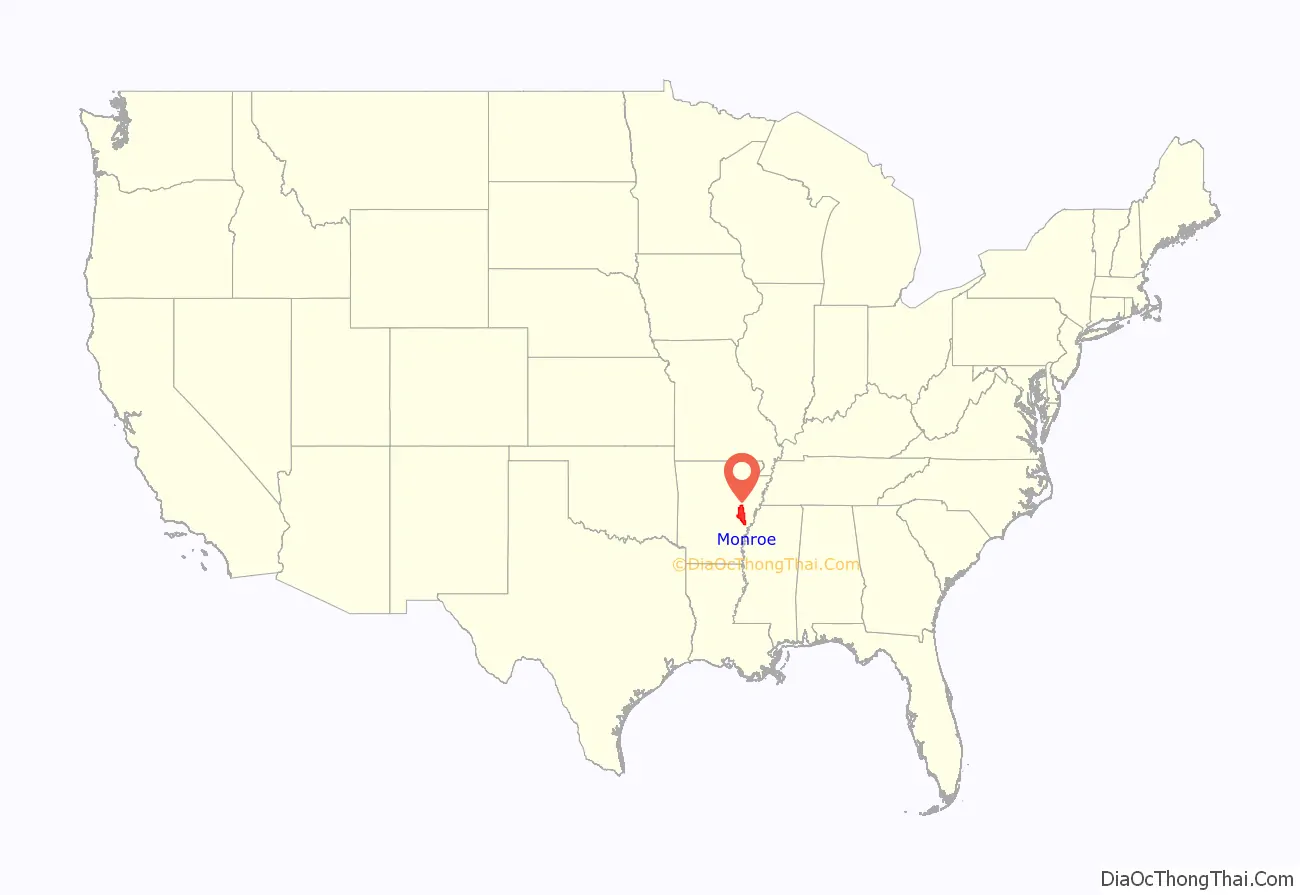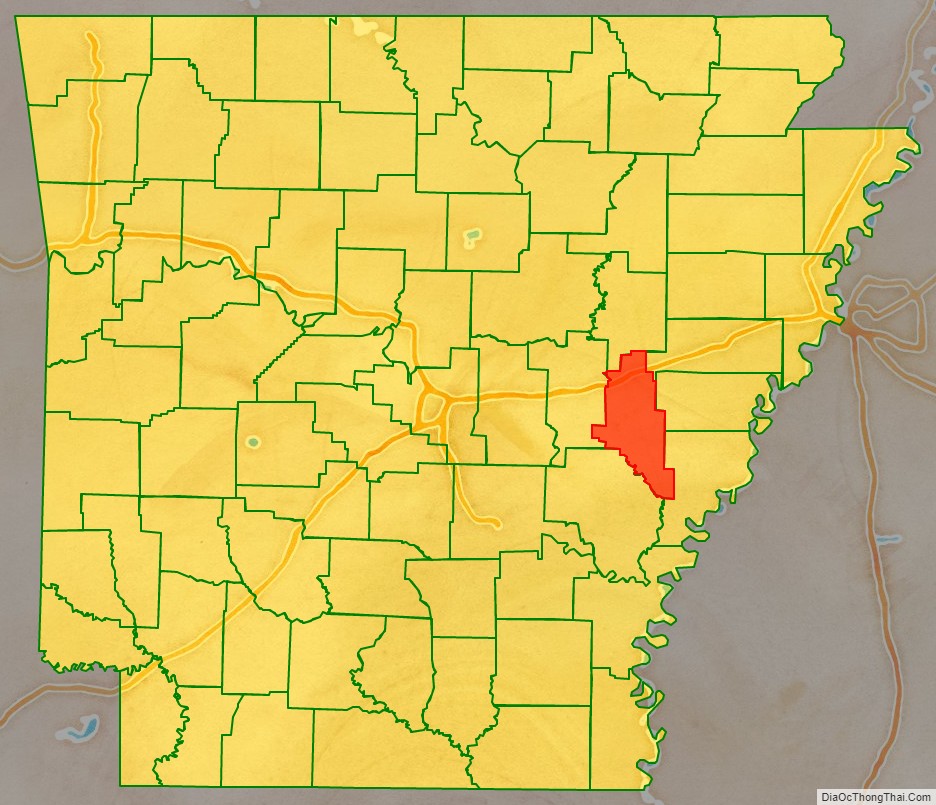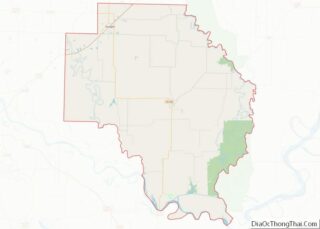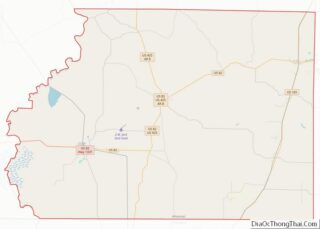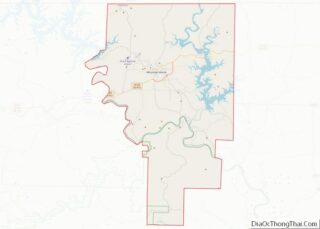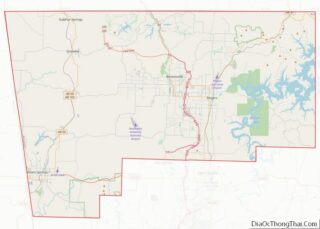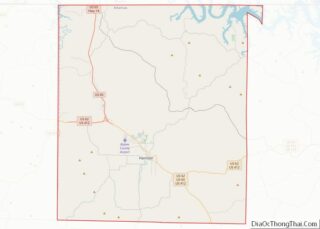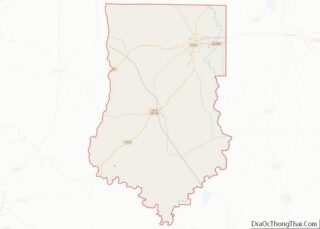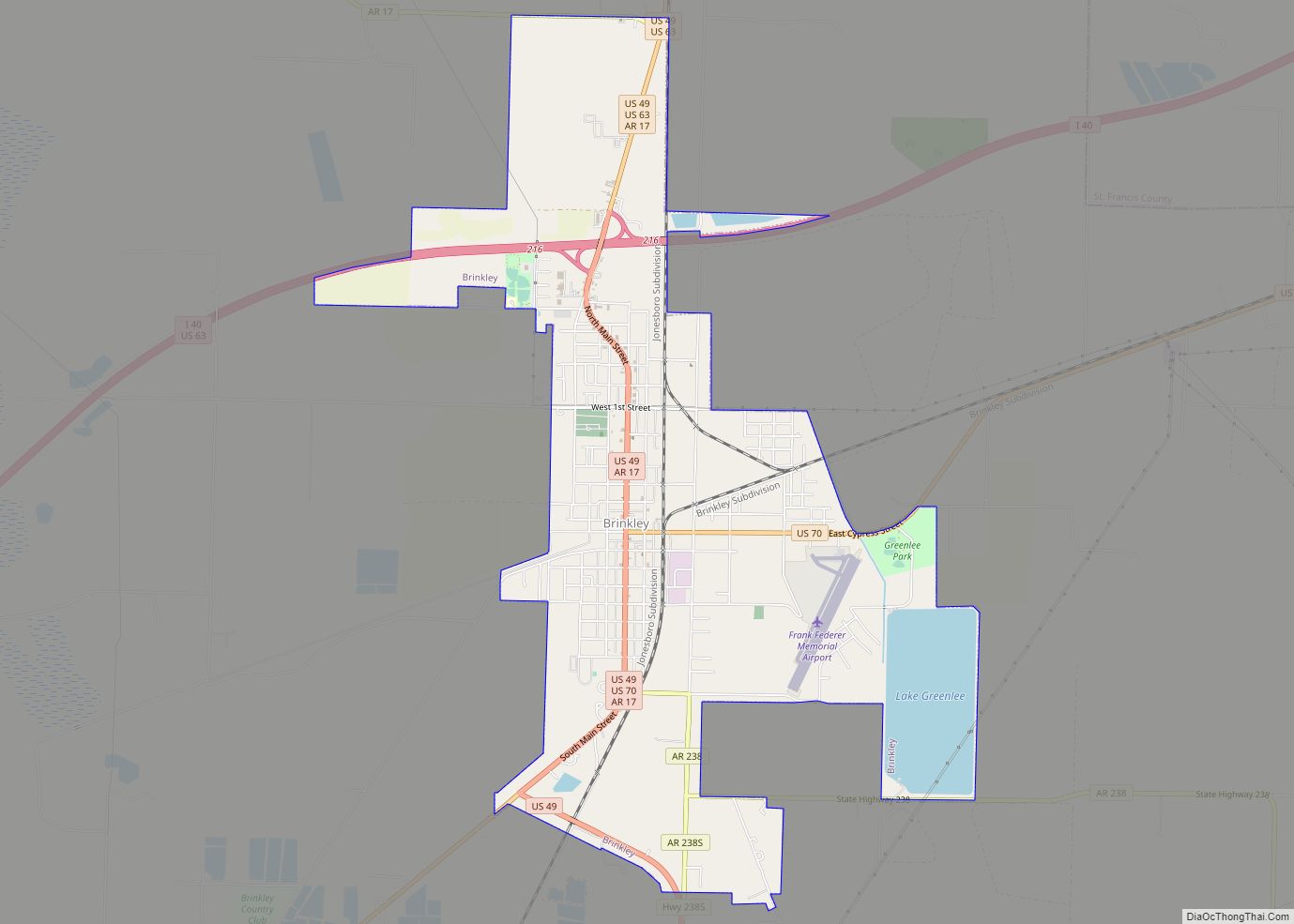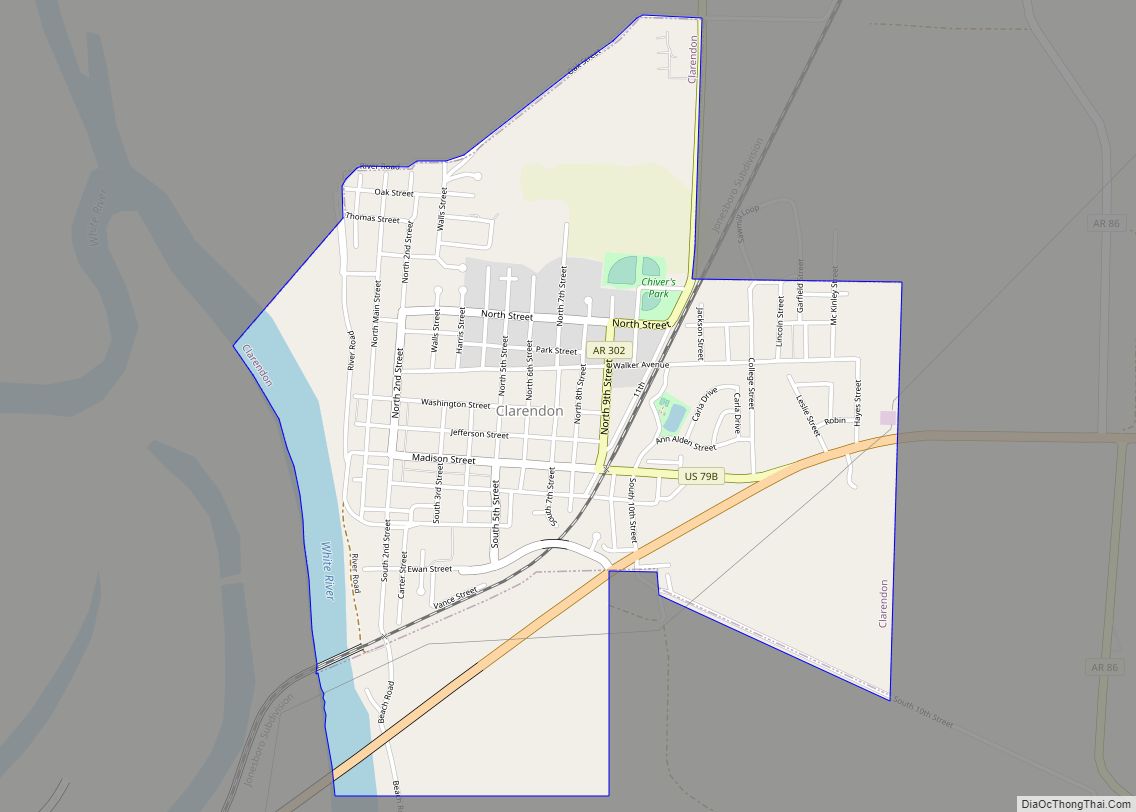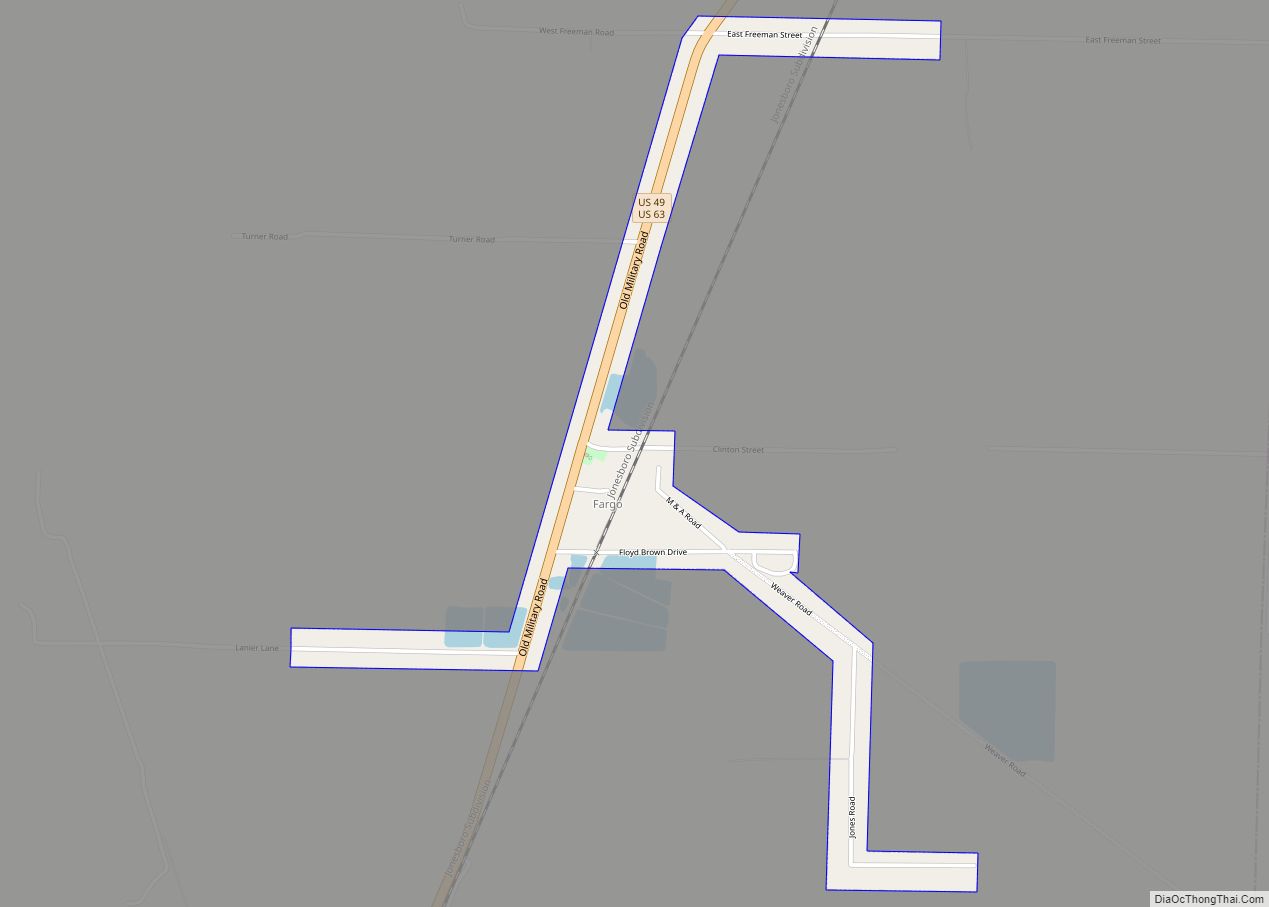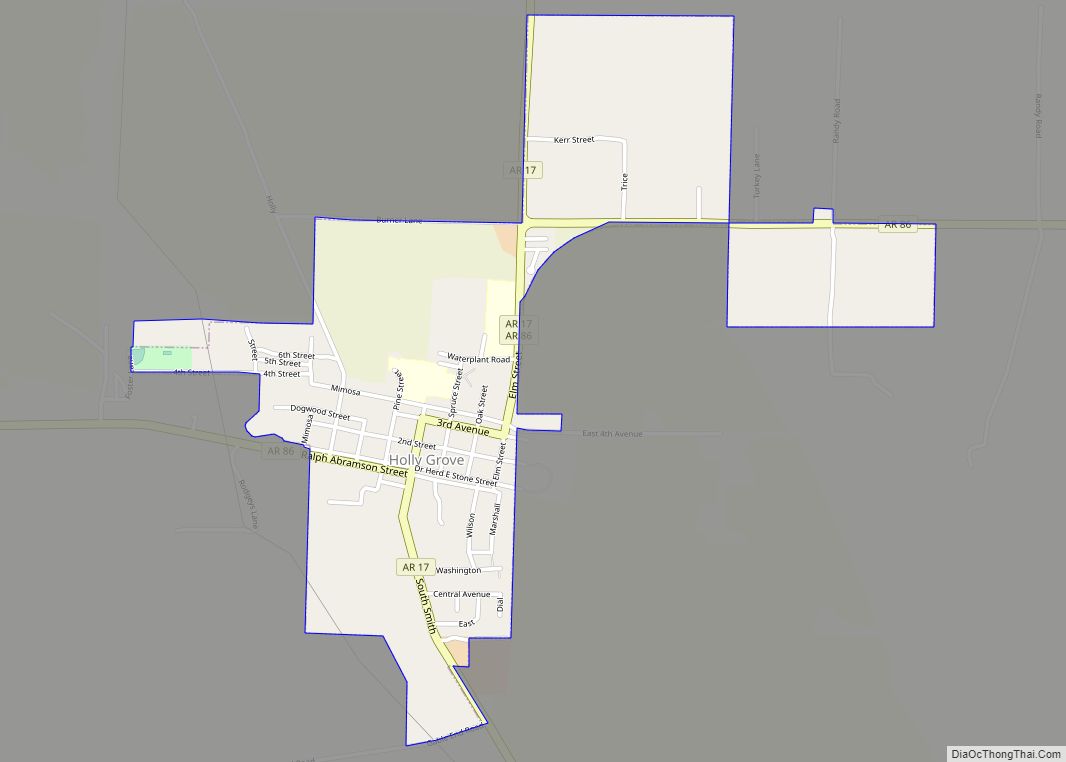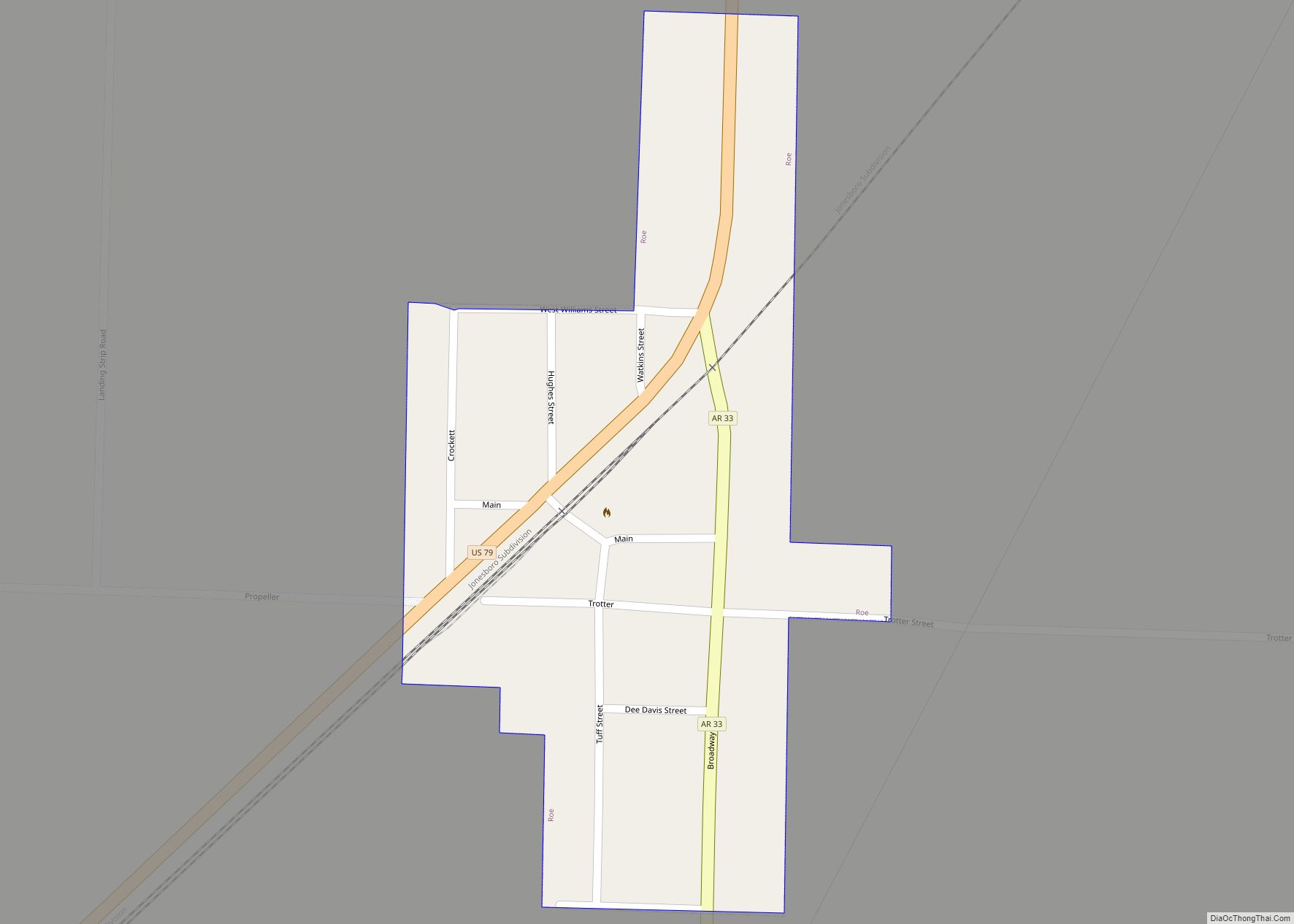Monroe County is located in the Arkansas Delta in the U.S. state of Arkansas. The county is named for James Monroe, the fifth President of the United States. Created as Arkansas’s 20th county on November 2, 1829, Monroe County is home to two incorporated towns and three incorporated cities, including Clarendon, the county seat, and Brinkley, the most populous city. The county is also the site of numerous unincorporated communities and ghost towns.
Occupying only 621 square miles (161,000 ha), Monroe County is the 22nd smallest county in Arkansas. As of the 2020 Census, the county’s population was 6,799. Based on population, the county is the fifth-smallest county of the 75 in Arkansas. Located in the Arkansas Delta, the county is largely flat with fertile soils. Historically covered in forest, bayous, swamps, and grasslands, the area was cleared for agriculture by early European-American settlers who used enslaved African Americans to do the work and to cultivate cotton. It is drained by the Cache River, Bayou DeView, and the White River. Three large protected areas preserve old growth bald cypress forest, sloughs and wildlife habitat in the county: Cache River National Wildlife Refuge (NWR), Dagmar Wildlife Management Area and White River NWR and provide places for hunting and fishing.
Interstate 40 is the only Interstate highway in Monroe County, crossing the county from east to west through Brinkley, the largest city. The county also has three United States highways (U.S. Route 49 [US 49], US 70, and US 79) and twelve Arkansas state highways run in the county. A Union Pacific Railroad line crosses the county from southwest to northeast.
| Name: | Monroe County |
|---|---|
| FIPS code: | 05-095 |
| State: | Arkansas |
| Founded: | November 2, 1829 |
| Named for: | James Monroe |
| Seat: | Clarendon |
| Largest city: | Brinkley |
| Total Area: | 621 sq mi (1,610 km²) |
| Land Area: | 607 sq mi (1,570 km²) |
| Total Population: | 6,799 |
| Population Density: | 11/sq mi (4.2/km²) |
| Time zone: | UTC−6 (Central) |
| Summer Time Zone (DST): | UTC−5 (CDT) |
Monroe County location map. Where is Monroe County?
History
Shortly after the United States had completed the Louisiana Purchase, officials began to survey the territory at a site near the intersection of Monroe, Phillips, and Lee counties. From forested wetlands in what would become southern Monroe County, approximately 900,000 square miles (2,300,000 km) of land would be explored after President James Madison commissioned a survey of the purchase area. The point was commemorated in 1961 by the Arkansas General Assembly as part of Louisiana Purchase State Park.
Settlement in Monroe County began when Dedrick Pike settled in 1816 where the Cache River enters the White River. The settlement was named Mouth of the Cache, and a post office by that name was opened years later. The community renamed itself Clarendon in 1824 in honor of the Earl of Clarendon. Monroe County was established under the Arkansas territorial legislature in 1829, and the county seat was established at Lawrenceville, where a jail and courthouse were erected. A ferry across the White River was founded in 1836.
In 1857 the county seat was moved to Clarendon, Arkansas. The new brick courthouse was nearly finished by the outbreak of the American Civil War in 1861. The county sent five units into Confederate service. After Union troops captured Clarendon in 1863, they destroyed the small city. The Union had completely dismantled the brick courthouse and shipped the bricks to De Valls Bluff.
After the war, during Reconstruction, there was a high level of violence by insurgent whites seeking to suppress the rights of freedmen and to keep them from voting. After Republican Congressman James M. Hinds was murdered by the Ku Klux Klan in Monroe County in October, 1868, Governor Powell Clayton established martial law in ten counties, including Monroe County, as the attacks and murders were out of control. Four military districts were operated for four years in an effort to suppress guerrilla insurgency by white paramilitary groups, such as the Ku Klux Klan and others. They continued to challenge enfranchisement of blacks and the increasing power of Republicans in the county. The Monroe County Sun newspaper was established in 1876.
Violence continued after Reconstruction, when Democrats had regained control of the state legislature. Whites struggled to re-establish white supremacy, by violence and intimidation of black Republican voters. At the turn of the century, the state legislature passed measures that effectively disenfranchised most blacks for decades. The Equal Justice Initiative reported in 2015 that the county had 12 lynchings of African Americans from 1877 to 1950, most in the decades near the turn of the 20th century. This was the fourth-highest of any county in the state. To escape the violence, thousands of African Americans left the state in the Great Migration to northern and western cities, especially after 1940.
Mechanization of farming and industrial-scale agriculture have decreased the need for workers. The rural county has continued to lose population because of the lack of work opportunities. There has been a decrease in population every decade since 1940.
Monroe County Road Map
Geography
The county is located in the Arkansas Delta, one of the six primary geographic regions of Arkansas. The Arkansas Delta is a subregion of the Mississippi Alluvial Plain, which is a flat area consisting of rich, fertile sediment deposits from the Mississippi River between Louisiana and Illinois. Large portions of Monroe County are also within the Grand Prairie, a subdivision of the Arkansas Delta known today for rice farming and aquaculture. According to the U.S. Census Bureau, the county has a total area of 621 square miles (1,610 km), of which 607 square miles (1,570 km) is land and 14 square miles (36 km) (2.3%) is water.
Prior to settlement, Monroe County was densely forested, with bayous, sloughs, and swamps crossing the land. Seeking to take advantage of the area’s fertile soils, settlers cleared the land to better suit row crops. Although some swampland has been preserved in the conservation areas like the Cache River NWR and White River NWR, and some former farmland has undergone reforestation, the majority (52 percent) of the county remains in cultivation. Another large land use in Monroe County is the Cache River NWR and White River NWR, owned by the United States Fish and Wildlife Service.
The county is located approximately 73 miles (117 km) east of Little Rock and 88 miles (142 km) west-southwest of Memphis, Tennessee. Monroe County is surrounded by six other Delta counties: Woodruff County to the north, St. Francis County to the northeast, Lee County and Phillips County to the east, Arkansas County to the southwest, and Prairie County to the west.
Hydrology
Water is an extremely important part of Monroe County’s geography, history, economy, and culture. The many rivers, streams, ditches, sloughs and bayous crossing the county have featured prominently since prehistoric times. Native American tribes settled near them and peoples such as the Quapaw constructed burial mounds at Indian Bay in extreme southern Monroe County (today preserved as Baytown Site).
Europeans who settled in the county also used the White River to navigate through the area and trade. Control of the White River lead to military action in the county during the Civil War, including a gunboat battle at Clarendon in 1864. The Flood of 1927 damaged much of the county’s settlements along the White, and inundated Clarendon when the levees protecting the city failed on April 20. Conservation efforts by leaders in the county resulted in the creation of federal and state protected areas around the Cache and White rivers, to protect wetlands that could absorb flooding, beginning in 1935. These have been expanded to the current day, as engineers understand more about the positive role of wetlands in floodplain ecology.
The White River, one of Arkansas’s most important rivers, is the county’s major hydrologic features. The White forms the southwestern boundary of the county with Arkansas County. The Cache River runs on the west side of Monroe County, partially forming its border with Prairie County. Both the Cache River and Roc Roe Bayou empty into the White near Clarendon. Bayou De View runs through the north part of the county and meets the Cache north of Dobbs Landing.
National protected areas
- Cache River National Wildlife Refuge (part)
- White River National Wildlife Refuge (part)
